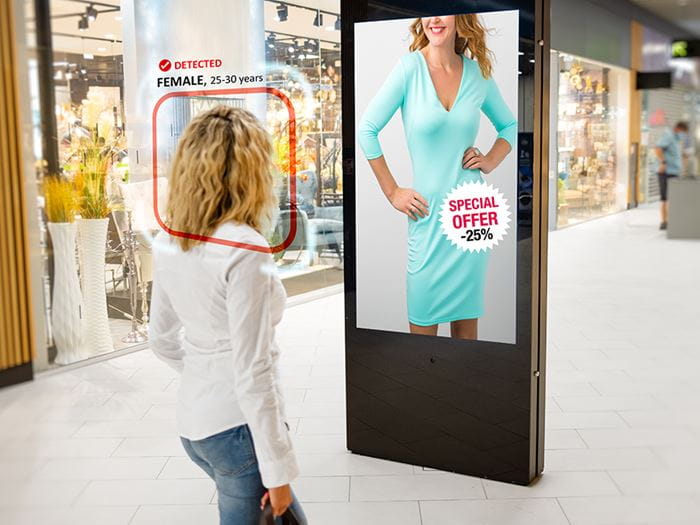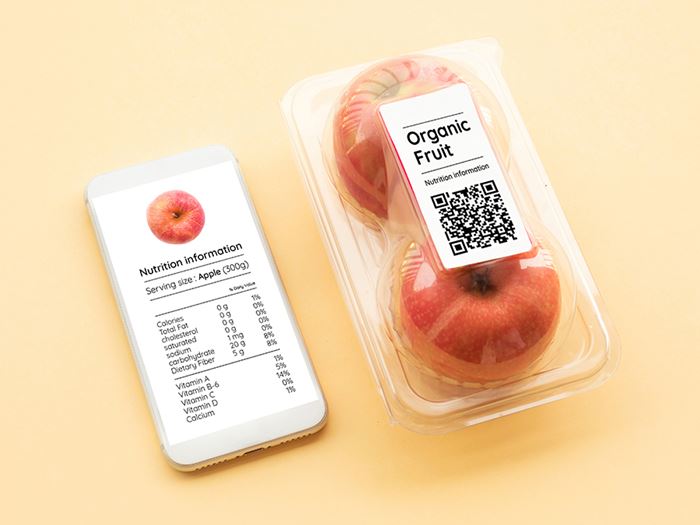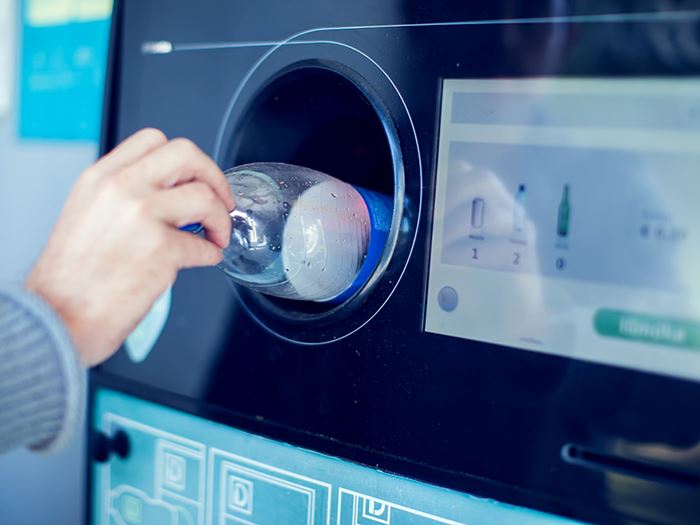7 biggest retail trends of 2024
Tick … tick … tick …
Now within a year of 2025 sustainability target deadlines, the countdown clock ticks louder and louder in the ears of retailers… and they’re frantic.
“A lot of these goals were put in place, and everybody said, ‘It’s ten years away.’ Well, 10 years is now coming due in a matter of months,” said Leon Nicholas, vice president of Retail Insights and Solutions at WestRock.
“There’s been this ‘Yikes!’ moment with retailers who are now worried about not meeting their goals, and they’re sending that down to the category managers saying, ‘You're now responsible for 11% of my plastic reduction.’ And the managers are turning to the product suppliers,” said Nicholas.
On top of target deadlines and sustainability pressures, consumer purchasing behavior motivated by inflation is pushing brands to be more efficient. Globally, over 80% of consumers recently adjusted their buying habits, with over 40% of those reducing the amount they buy. While inflation is easing, there is still talk of a recession in 2024, making efficiency another key target as brands try to improve their bottom lines.
The fast evolution of AI and IoT technologies is making more efficiency possible with brands rushing to adopt AI tools for things like demand forecasting and inventory management. The demand for AI in retail is expected to grow by over 28% between 2023 and 2033.
The combination of these environmental, economic and digital landscapes means 2024 will see the start of the greatest shift in packaging since the introduction of plastic. Understanding how each of these areas intersect with e-commerce and brick-and-mortar retail led Nicholas to identify multiple trends impacting the retail industry. These seven trends play a significant role in this great packaging evolution.

1. Increased automation in stores
The rising use of stores being used as distribution points is bringing about the need for efficiency and automation. Employing people to pick items off shelves and pack them, which used to be done by shoppers, isn’t cost-effective for retailers. And the growing use of AI means that any repetitive physical movements requiring little analysis (unloading, sorting, stacking, stocking, picking, packing, and transporting) could be done by robots, machines, or drones. However, packaging will need to be redesigned to accommodate.
“Most packaging today was designed to be viewed on a store shelf, and a drone or a robot would have a hard time picking up a bag of salad or a big bag of dog food,” said Nicholas. “The packaging has to be redesigned in order for us to make full use of automation.”
What this means for packaging
Expect to see package redesigns focusing on ease of automation and sustainability to meet targets. These redesigns, however, won’t have to focus as much on shelf appeal. RFID and smart tag technology is also needed to accommodate automation, but many retailers are already requiring brands to use those on all packaging. So, we expect to see continued and widespread adoption of the technology.

2. More use of the point-of-purchase as a medium
Marketers used to focus on consumers mostly during pre-purchase, and sometimes at the point-of-purchase with special displays. Today, marketers are focused on using digital technology in stores to not only drive purchase decisions but build brand awareness and engagement to guarantee future purchases.
Through smart digital displays and kiosks, brands can gain consumer interaction and useful data about their consumers to better understand and target them. “These screens are being incorporated into retailers’ media networks, so the store is becoming digitized as a media platform,” said Nicholas. “So you walk by a display that captures you, and that “view” or engagement can now be charged back to the manufacturer.”
The addition of digital technology to shopping carts (smart carts) also provides an additional touchpoint and opportunity for brands to connect consumers to useful information such as ingredient or allergen information, product comparisons, or information on promotions.
What this means for packaging
Expect to see more marrying of paperboard display with digital display technology, and expect makers of paperboard displays to begin including this option in their display offerings.

3. Sustainability on display
Even if regulations weren’t being levied, retailers would still be making moves to redesign packaging and products to replace single-use plastic since they know consumers today prefer it, choosing it with their purchase decisions. More than half of consumers would pay more products that come in sustainable packaging, and these preferences are influencing design at every consumer touchpoint.
“Often small and emerging brands, like Native, are able to push themselves to the forefront with this strategy,” said Nicholas. More brands are putting sustainability front and center and showing accountability through sharing actual numbers, certifications, or goals on packaging and displays.
What this means for packaging
If brands haven’t done it already, expect product and packaging redesigns with transparency and sustainability in mind, the disappearance of single-use plastic packaging, and point-of-purchase displays that call a brand’s sustainability to attention. Design elements often include sharing numbers and certifications and using more recyclable, natural kraft paperboard packaging and displays that use less printing ink.

4. More post-purchase engagement
“In the past, we’ve neglected the idea of the package as a post-purchase engagement vehicle in people's homes, but that’s ending,” Nicholas said.
With the resurgence of QR codes, retailers are finding many ways to use them and other scannable technology for post-purchase engagement. Being able to use the package as a portal gets more return purchases (scan code to reorder the product, find the latest product discount, or find the nearest retail provider), and it allows consumers to scan for valuable product information, such as ethical supply chain and sourcing, allergens and ingredients, and proper ways to recycle or dispose of product packaging.
What this means for packaging
Expect to see more of the package as a portal, allowing customers to interact directly with the brand.

5. End-to-end density: fitting more product on pallets
Shipping is expensive, even with gas prices coming off their recent peak. Reducing the amount that needs to be transported not only cuts shipping costs, but it also cuts down on carbon emissions, a goal on everyone’s target list.
Air can take up as much as 64% of one shipping container. If brands can eliminate the wasted space, they can pack containers full of more product and reduce both costs and their carbon footprint at the same time.
What this means for packaging
Expect to see redesigned primary packaging with less room for air and more right-sized secondary packaging as well. E-commerce retailers are turning to solutions like our Box on Demand automation to make sure secondary packaging is right-sized, and they’re also choosing to ship products without additional packaging.

6. Reverse vending and track-and-trace beyond managing inventory
The use of RFID and smart tags became the norm since big-box retailers like Walmart started mandating their use to better track inventory. While there’s been wide adoption, brands and retailers haven’t yet maximized use of our ability to track every product and package, and that’s about to change.
Reverse vending has also had much success globally, and the reverse vending market is expected to surpass $630 million by 2028. European countries with deposit return systems achieve the highest return/recycling rates ranging from 85 percent to 98 percent, depending on the country. In Canada, the average return rate for deposit containers is 80%. These rates are almost double the rates of curbside recycling.
With a combination of reverse vending and smart tags, brands can reclaim more of their packaging and make a major dent in their sustainability goals. One package could be traced through its full lifecycle, moving through the supply chain to retail, to consumer, and then to reuse or recycling. “I can actually track where it goes from the point that I produced it to whether or not it was recycled,” Nicholas said.
This full-circle tracking allows brands to better measure and track their sustainability efforts, knowing how much of their packaging is being recycled and measuring consumer awareness of proper recycling and disposal. The tags could also allow recycling facilities to more quickly and easily identify and sort recyclables using automation.
What this means for packaging
Instead of throwing product packaging in their home recycling bins, consumers will be able to bring it back to a reverse vending machine at the point of purchase in exchange for something of value, like a discount on the next purchase. We’ll see growing visibility for brands and retailers who will be able to gather and analyze data on the full lifecycles of all their products and packaging leading to greater accountability.

7. Evolving smart packaging
RFID and smart tags allowed for vast improvements in inventory management, but we’ve only begun to scratch the surface when it comes to using smart packaging for quality control. As this technology and the internet of things evolve, we’ll see more brands use this to control and maintain product quality through the ability to monitor environmental conditions and expose counterfeit product.
The food and beverage industry is already using smart tags to maintain “first-in-first-out” inventory policies, making sure no product ever sits in a warehouse past its expiration date. Major brands are also using indicators that measure temperature or humidity to alert them to possible spoilage or contamination. As use of IoT expands, this will become the norm for all brands.
Luxury health and beauty product brands are also starting to imprint coding right into their packaging for guaranteeing authenticity. E-commerce and online retail opened doors for counterfeit versions of these products to be sold to those looking for discounts, and if a consumer were to claim one of these products didn’t provide the advertised results, or let’s say, produced an allergic reaction, the coded packaging makes it easy for a brand to determine the reason is because the product is a fake.
What this means for packaging
Consumers may eventually have the power to scan a package to determine that they’re purchasing the real thing and not a counterfeit. Expect more luxury brands to adopt coded packaging this year and major food and beverage brands to implement more complex versions of intelligent packaging that helps them ensure product quality and reduce and more effectively recall product. These brands will work out the “new-tech” kinks before everyone else jumps on board.
Nicholas says the key to anticipating the trends is understanding where the current drivers (sustainability, automation and efficiency) meet brick-and-mortar and e-commerce retail. As these drivers affect packaging, he recommends brands share their product goals and challenges with their packaging provider since there is a wealth of guidance those teams can share regarding supply chain, shipping and transport, and consumer touchpoints.
For example, because recycled paper board is one of their main material sources, WestRock will work with major brands to reclaim their packaging material, helping them to meet recycling targets. Nicholas says allowing teams like WestRock to consult on processes is the best way to truly leverage the power of a good packaging partner and meet your sustainability goals.
